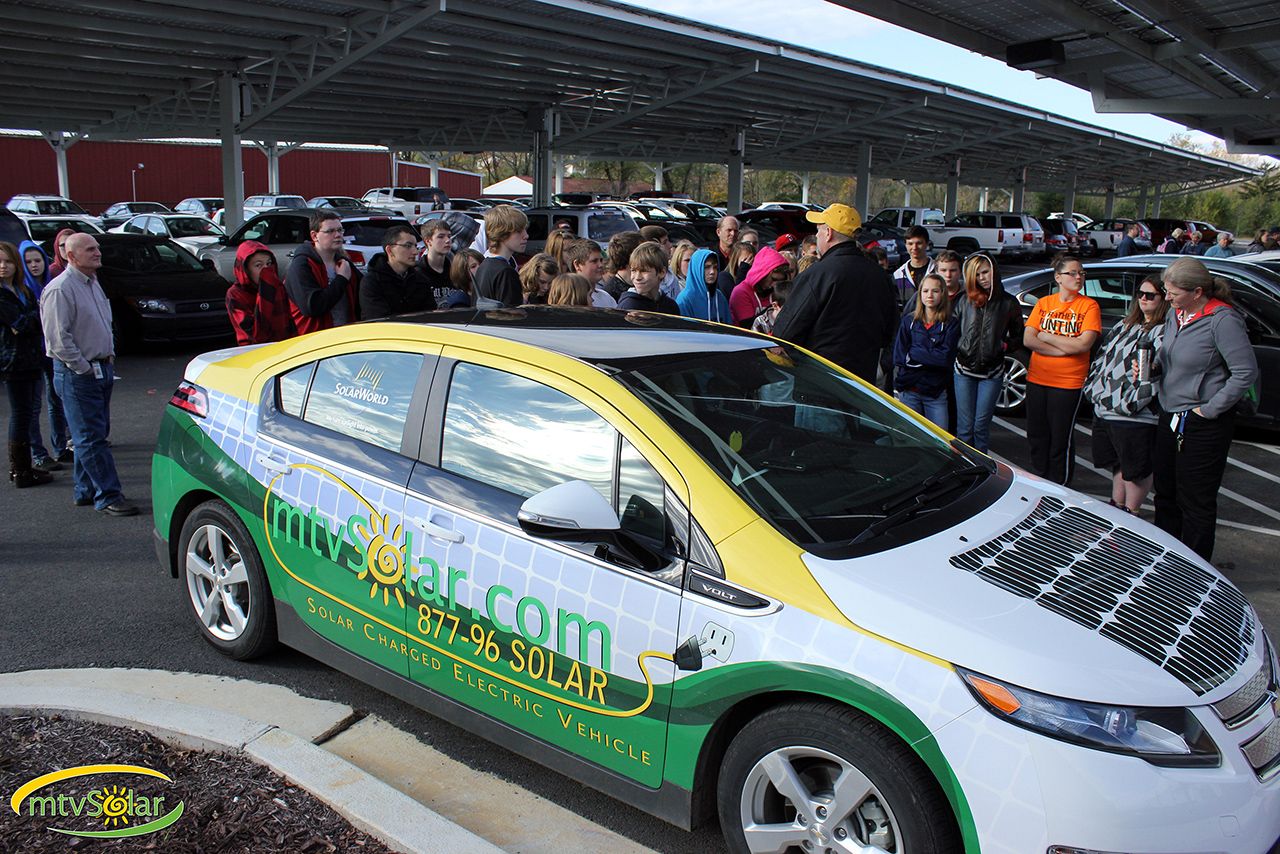 The electric car market continues to grow, despite taking a long road in evolving to a time when we’ll all be driving them. That time may soon be upon us, and it’s good news on an environmental level. However, it doesn’t mean it won’t pose some big challenges in how they’ll be charged.
The electric car market continues to grow, despite taking a long road in evolving to a time when we’ll all be driving them. That time may soon be upon us, and it’s good news on an environmental level. However, it doesn’t mean it won’t pose some big challenges in how they’ll be charged.
As we’ve recently noted at Mountain View Solar, electric car prices have gone down over the last few years, leading to more people buying them. Features and range have continued to improve at a phenomenal pace.
What’s going to happen when we have to charge so many electric cars every day? Read on to look at three pertinent issues solar technology will have to fix.
1. Demand Charges
Charging so many electric cars in one spot will have large energy requirements, and it’s likely going to mean increased demand charges for commercial customers as a result. Demand charges are racked up when large amounts of power are consumed in a short time. Ultimately, too much power usage at once could cause brownouts, something we could see happen once electric cars become the norm. To mitigate this, utilities bill commercial clients based on the load they put on the grid to ensure the transmission lines are up to the task.
Here in the mid-Atlantic area, demand charges are typically charged based on the highest 15-minute average usage recorded within a given month. In other words, if a business happens to use a lot more power in shorter intervals over a month’s time, demand charges are going to become larger. Likewise, more consistent use of power over the month means lower demand charges.
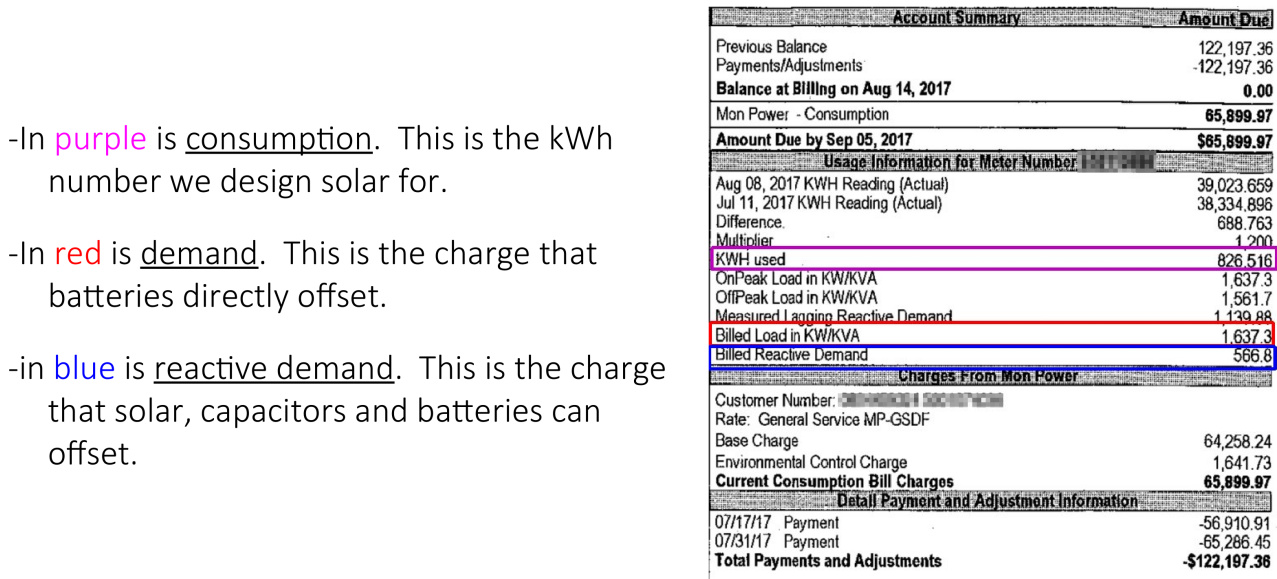 Consider that just a few 200KW DC fast chargers would cost a small fortune in demand charges alone. Having these chargers in front of businesses could add substantial energy cost just to energize them for their customers.
Consider that just a few 200KW DC fast chargers would cost a small fortune in demand charges alone. Having these chargers in front of businesses could add substantial energy cost just to energize them for their customers.
While most residential customers in the West Virginia, Virginia, Maryland and Pennsylvania service area don’t pay demand charges, the utilities will still have to deal with an overall increase in demand on the grid as people add EV chargers at home. With tens of thousands of EV chargers at homes, the overall demand on the grid will sharply rise.
Larger businesses providing charging stations will simply have to get creative and not use as much power during peak hours. This may have to entail allowing charging only during specific times to make energy bills slightly more manageable. Businesses could also use their existing diesel backup generator to offset some of that demand, but that pretty much negates a major reason for owning an EV. Instead, using solar and/or battery storage technology will help immensely as the power needed for EV chargers can be offset and spread out over time.
Residential customers can also make their EV investment pay back faster with the added benefit of avoided gasoline and electricity costs by charging their cars from the sun at home. This will help utilities keep energy prices reasonable as you can offset your own demand on the grid.
2. Charging Cars With Solar Rather Than Power Plants
Relying on coal-fired power plants is the standard in the mid-Atlantic, and some people insist that coal shouldn’t go away, and it won’t for a long time to come. The problem here is that increasing numbers of EV chargers will make consumption from coal and natural gas plants go up. Because of the demand charges from utilities, businesses won’t want to pay the massive electric bills for use of EV chargers by employees. In some cases, it may mean businesses giving up some of those chargers simply because they cost too much to operate, or billing customers to use them.
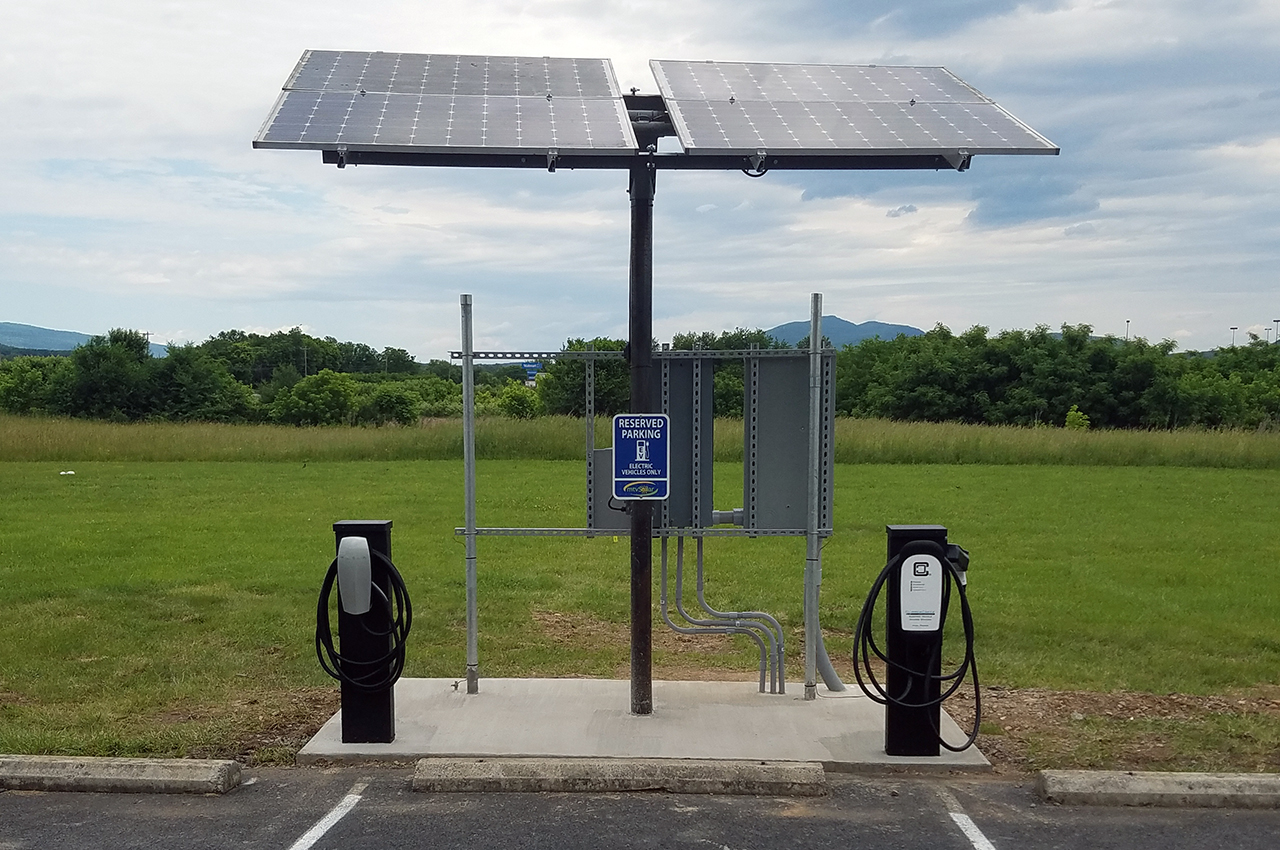 Once again, solar energy is a very good solution. Charging cars with solar technology will allow producing energy where it’s needed. Without solar near the location of usage, the utility infrastructure providing the energy for all these charger stations may not have enough ability to generate and distribute that much power. In Seattle, Washington, for instance, tests were done on monitored EV chargers way back in 2012. They determined that 70 MWh of energy were used on the monitored chargers within the city during just one quarter of the year.
Once again, solar energy is a very good solution. Charging cars with solar technology will allow producing energy where it’s needed. Without solar near the location of usage, the utility infrastructure providing the energy for all these charger stations may not have enough ability to generate and distribute that much power. In Seattle, Washington, for instance, tests were done on monitored EV chargers way back in 2012. They determined that 70 MWh of energy were used on the monitored chargers within the city during just one quarter of the year.
With electric chargers growing considerably in major cities since then, the energy load is even greater now. According to statistics as of last year, 16,000 EV chargers exist in the U.S., with 43,000 connectors. As EVs evolve with ever larger battery packs, charging stations are getting more powerful to offer a quick charge, so each charger draws more power.
Solar energy will have to become a major solution to this in all major cities within the coming decade or two. Traditional power plants will always be supplying some of this power, but offsetting usage with solar energy will save businesses exponential money and lead to cleaner air for everyone. Large battery banks at the solar sites can also permit charging while it’s dark and spread out the utility load, so as to avoid excessive demand charges.
3. Charging Electric Cars at Work
For commuters, another issue is how they’ll find a charging station when driving their routes. Due to the energy demands, some places may eliminate these chargers in places where commuters think they’ll be. To accommodate the growing use of electric cars, charging stations are going to have to increase. Trying to find a clean energy solution, though, means inevitably turning to solar to find answers.
One major solution to the commuter problem is to have charging stations at work. Businesses will have to invest in a large solar array to mitigate those demand charges. Some companies may still balk at investing in solar based on worries about cost and ROI. However, prices have come down considerably for solar panels, not including tax incentives and overall savings incurred after the initial investment, leading to much shorter ROI and positive cash flow. Even with financing, businesses in the area have seen fantastic returns.
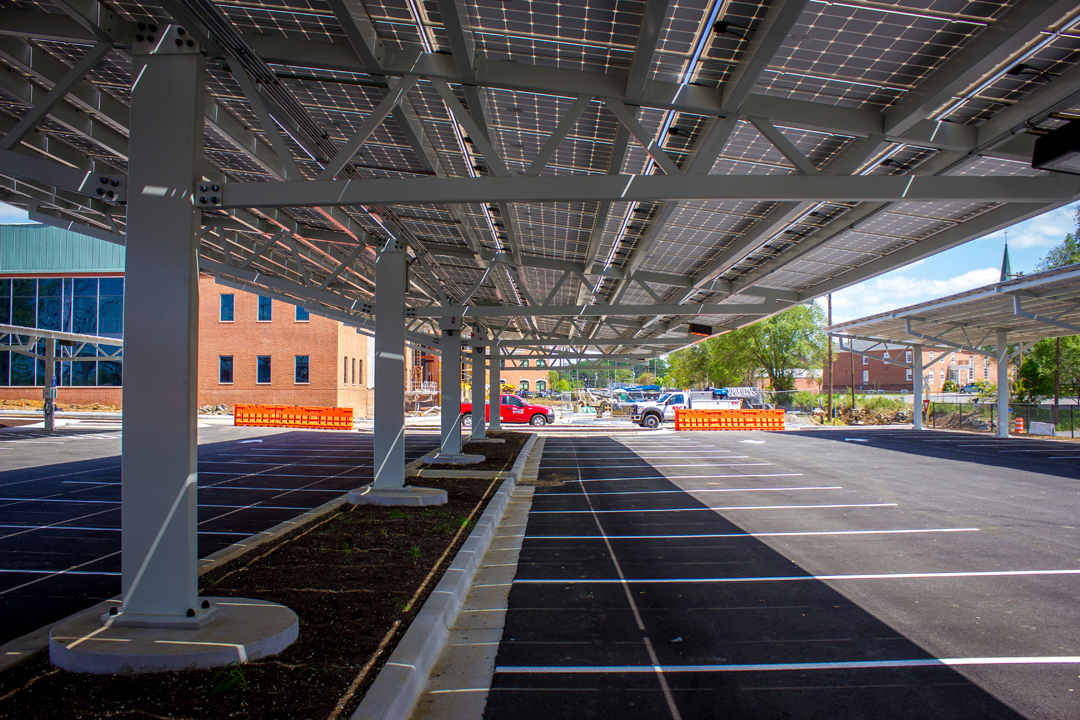 Here at Mountain View Solar, we’ve installed numerous solar powered charging stations throughout West Virginia. One notable project took place at APUs (American Public University Systems) in Jefferson County. It involved installing a carport solar array with numerous EV chargers back in 2011. We’re extremely proud of our involvement in this, because it provided a new way for a business to gain significant power for their charging stations and offices without facing major electric bills.
Here at Mountain View Solar, we’ve installed numerous solar powered charging stations throughout West Virginia. One notable project took place at APUs (American Public University Systems) in Jefferson County. It involved installing a carport solar array with numerous EV chargers back in 2011. We’re extremely proud of our involvement in this, because it provided a new way for a business to gain significant power for their charging stations and offices without facing major electric bills.
Thanks to this project, the parking area provides canopy protection for electric cars and lets them charge all day until employees go home. The project consists of 1,053 SolarWorld 250W mono-crystalline PV modules and 598 SolarWorld 240W mono-crystalline PV Modules on a carport structure. In total, this created an STC peak-rating of 406.8 kW while tied to a Satcon PVS-375 Powergate Plus Inverter.
Helping You Switch to Solar Energy
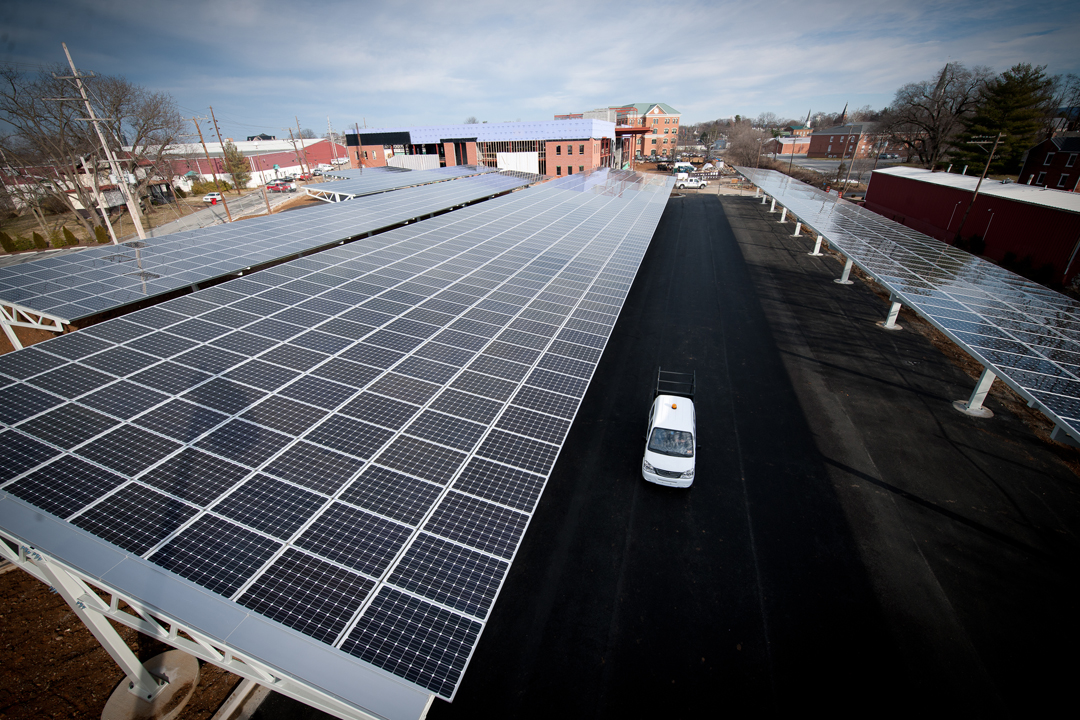 Serving the mid-Atlantic region of the United States, Mountain View Solar has become a leader in helping businesses and individuals reap the rewards of power from the sun.Since beginning in 2009, we continue to install innovative projects like at APUs, and have also installed numerous mini-solar assisted charging stations. As prices for solar panels have dropped, many businesses and residences are realizing the outstanding ROI in adopting solar energy. Despite all the political tug-of-war on the use of solar, without a doubt it’s reached general acceptance for both residential and commercial use. Solar and/or battery storage will be necessary to spread out the increasing load on the utility grid from EV chargers.
Serving the mid-Atlantic region of the United States, Mountain View Solar has become a leader in helping businesses and individuals reap the rewards of power from the sun.Since beginning in 2009, we continue to install innovative projects like at APUs, and have also installed numerous mini-solar assisted charging stations. As prices for solar panels have dropped, many businesses and residences are realizing the outstanding ROI in adopting solar energy. Despite all the political tug-of-war on the use of solar, without a doubt it’s reached general acceptance for both residential and commercial use. Solar and/or battery storage will be necessary to spread out the increasing load on the utility grid from EV chargers.
Contact us now to learn more about we can solve your energy challenges with solar, batteries and EV chargers. With mtvSolar by your side, you can be prepared for the inevitable future of electric cars.

